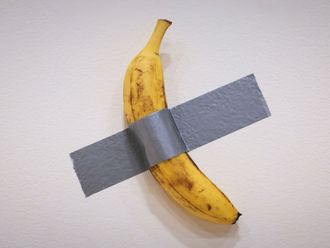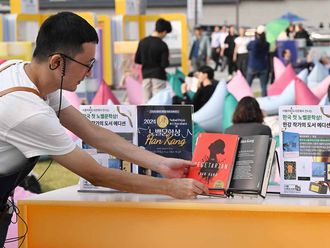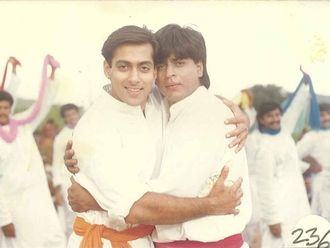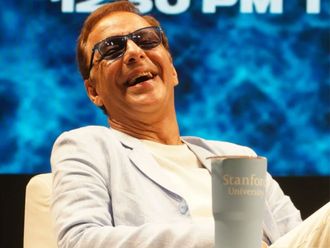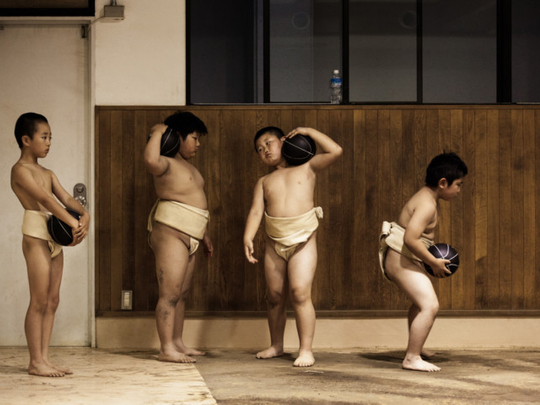
Chikara Yamanobe is about as far from a sumo wrestler as it’s possible to be. He’s so skinny that his ribs stick out, and his eyes well up when he gets manhandled in the ring. He’s also 5 years old.
Still, Chikara, whose name means “power”, wants to be a professional sumo wrestler when he grows up.
“I want to be like Endo,” he said after training for almost three hours at a “dojo” in northern Tokyo one recent Sunday morning, referring to the Japanese sumo star and heartthrob.
Chances are Chikara won’t make it.
Japan’s national sport, with its traditions and Shinto rituals and requirement for physical heft, is in decline as boys in this baseball-mad country lose interest in a sport that is seldom shown on prime-time TV and offers little in the way of branded goods.
In recent years, sumo has become dominated by foreigners. When the summer grand sumo tournament wrapped up this month, the winners were all from somewhere else. Terunofuji Haruo — a Mongolian born Gantulga Ganerdene — emerged victorious from a competition that featured two of his compatriots and a Bulgarian in the top rankings. Hawaiians and other Pacific Islanders, along with an Egyptian and a couple of Georgians, also have featured prominently this year.
This is partly the result of a general trend away from rigid traditions — the numbers of heavily made-up geisha also are plummeting — and the life of a professional sumo wrestler is particularly tough. Aspirants must give up school at 15 and live in a communal “stable” where everything from their hairstyle to their diet is regimented.
It also stems in part from a lack of access. The main sumo matches happen in the afternoon — they are shown on the public broadcasting network while most children are at cram school — and sumo arenas are filled largely with pensioners and tourists.
“They’re losing their demographic,” said Mike Wesemann, an American who runs the SumoTalk blog. Plus, it’s difficult for sumo to compete with other sports.
“It’s not like fathers say to their sons in the weekend, ‘Let’s go practise sumo,’ but they will go kick a ball around,” Wesemann said. “And in baseball and soccer, there are jerseys and hats that kids can wear, but they’re hardly going to wander around in a loincloth to show their love of sumo. There’s just nothing cool about it.”
Sumo officials are all too aware of this.
“Sumo is not a familiar sport compared to others such as soccer and baseball,” said Kento Nakazawa of the Japan Sumo Association, who organises a children’s sumo class every year. The association conducts the class at as many as six locations, but on average, only 50 to 60 children show up.
“There aren’t many opportunities for children to get to play sumo, so our aim is to provide an occasion,” Nakazawa said. “We’ll be happy if anyone, even one child, gets interested and starts to play.”
The Japan Sumo Federation, the group for amateur wrestlers, also is trying to get children interested through tournaments for junior high school students.
Noboru Yoshimura, administrative chief of the federation, said he was worried about sumo’s declining popularity. Even though martial arts became part of the junior high school curriculum in 2012, children are choosing kendo and judo over other options.
Yoshimura said the federation now provides a three-day sumo training course for teachers to boost interest. “Sumo doesn’t require much, there’s no equipment necessary, and it’s easier to start, so we are promoting sumo that way in order to expand the player base,” he said.
Numbers are hard to come by, but participation in the Wanpaku sumo tournament, an event for children, has dropped from 70,000 in 1994 to 33,000 in 2014. Starting last year, a qualifying round was held in Mongolia, and one will be held in Hawaii for the first time this year.
But at the “dojo” in Asakusa, a Tokyo neighbourhood famous for its Buddhist temple, boys of various ages were spending hours doing exercises, wrestling with coaches and fetching Band-Aids for grazes. In a sign of the sport’s hierarchical traditions, older boys took turns holding sweat towels for their coaches.
But the older boys also tended to the younger ones, fixing their “mawashi”, or loincloths, when they came loose and patiently taking them through their drills.
Boys — and they are almost always boys, as girls and women have not traditionally been allowed in the ring — generally practise sumo as a sport until high school. Then, if they want to continue, things become a lot more serious.
Toshiyo Abe sat on the “tatami” mats watching his son Shotaro, a 6-year-old missing a front tooth, wrestle older boys. Shotaro asked to start sumo a year ago after seeing it at one of the introductory tournaments, so now they travel an hour by train to the “dojo” every Saturday and Sunday.
“I’m a little envious that he is having so much fun,” Abe said.
He confessed to wanting Japanese wrestlers to work harder when Mongolians came to dominate the sport. “But then I thought about how Ichiro has done so well and how this is just accepted,” he said, referring to Ichiro Suzuki, the Japanese baseball player who is a member of the Miami Marlins.
Some parents, however, balk at a crucial part of getting ahead in sumo: being heavy.
“Some high school clubs make you eat until you throw up, but some clubs just leave it to you to bulk up,” said Akiteru Kiyomiya as he watched his sons, 13-year-old Itto and 10-year-old Kenshi, train. “If this is the path they want to take, then yes, I’ll support them.”
But the boys’ mother, Yumi Kiyomiya, was not so sure. “I actually don’t want them to get big,” she said. “I just feed them balanced meals.”
After the four-hour training session, Shinju Taira, a former professional wrestler who now coaches at the “dojo”, said he worried about the decline of sumo both as a sport and as a part of a culture.
“It’s not that everybody will get into the professional levels, but we’re trying to raise future leaders, people who can be leaders in our society,” he said.
Hisao Yoshiyoka, who had two sons on the mat at the “dojo”, said she was happy about her boys’ experience.
“They’re learning how to survive in society, in this hierarchical world, and they’re learning about Japanese traditions,” she said. “When the young ones come for the first time, they are a little bit scared to go into the ring. But as they learn how it’s done, they become more confident.”
Her youngest son, Ryudai, 7, has already chosen his professional sumo wrestler name. Watch out in 2030 for a “yokozuna”, or grand champion, called Dairyu.
–Washington Post



